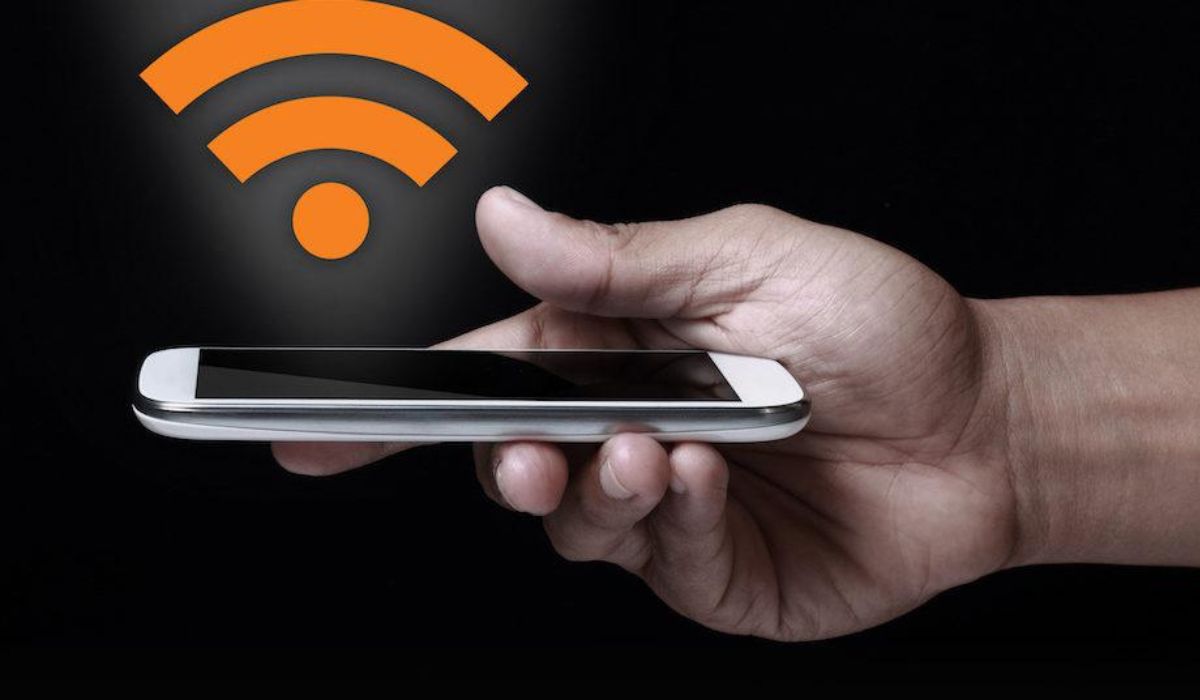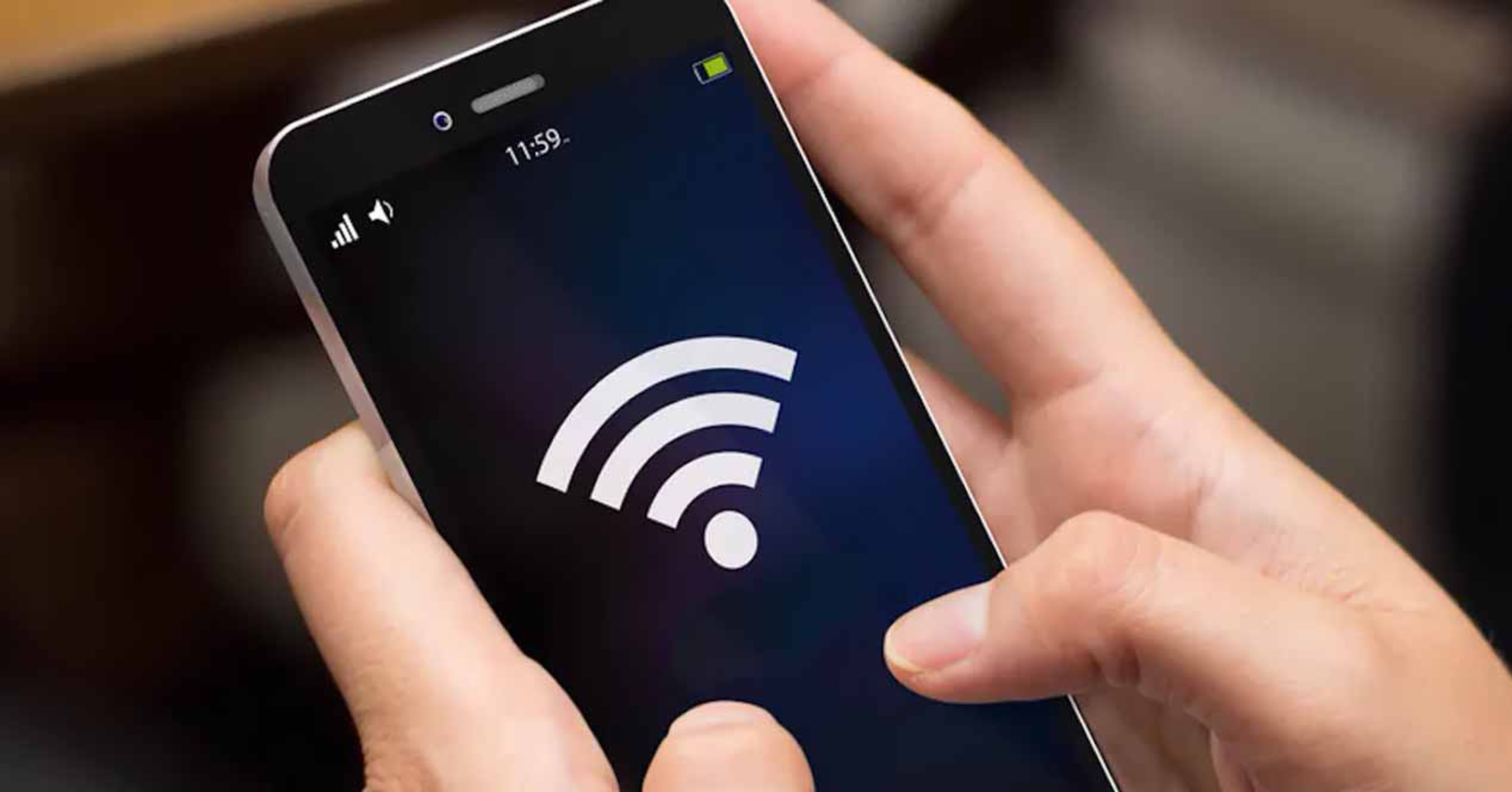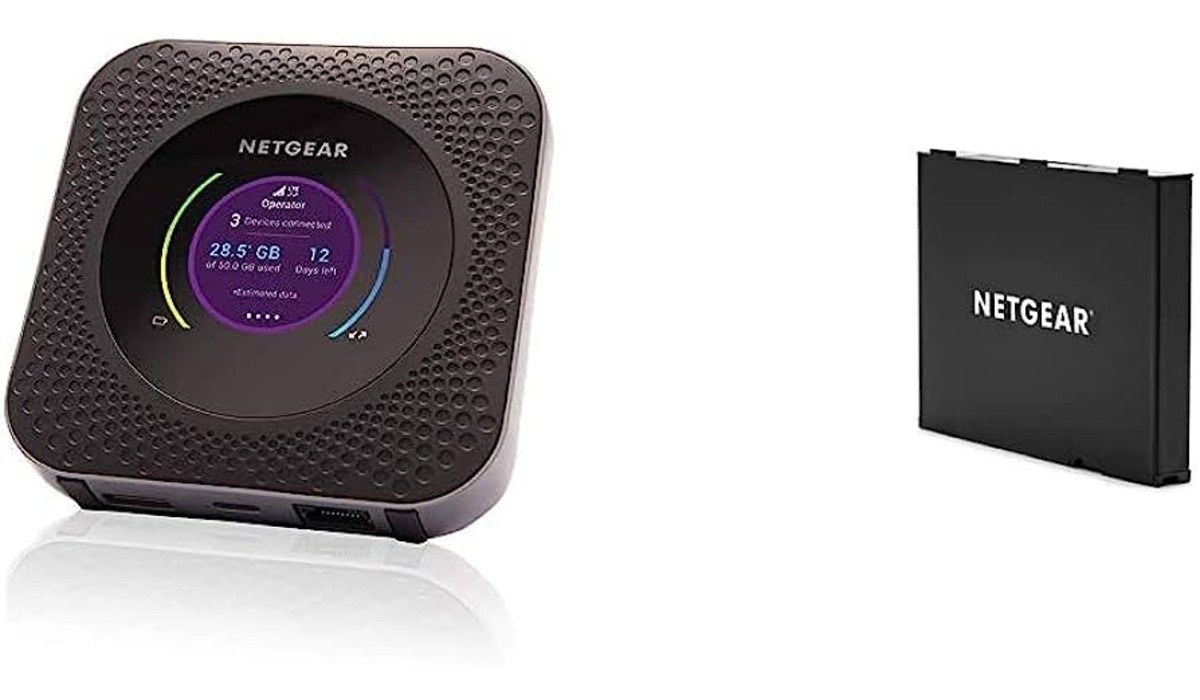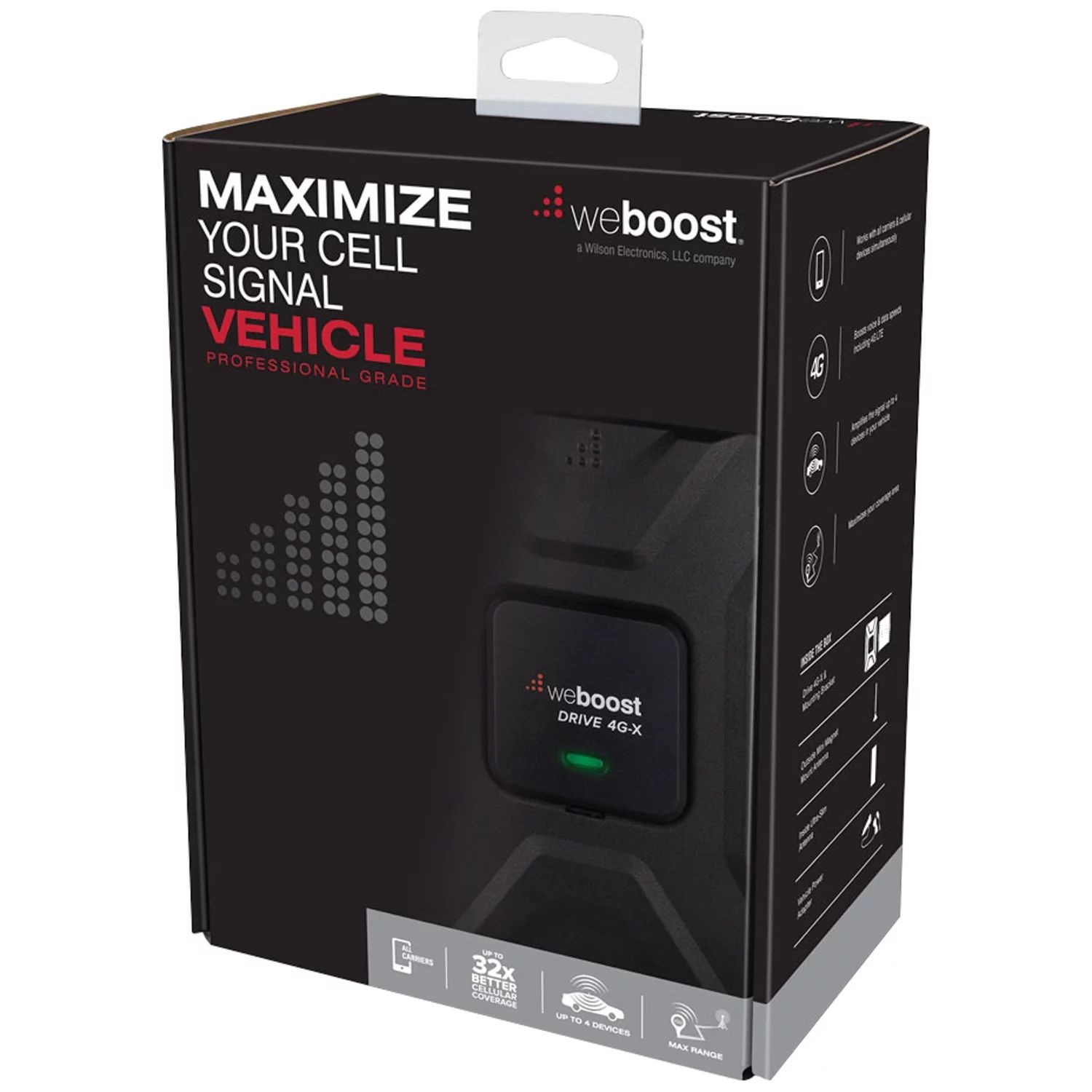Introduction
In today's fast-paced world, staying connected is more important than ever. Whether it's for work, school, or leisure, having access to the internet on the go has become a necessity. With the advancement of technology, our smartphones have evolved into powerful tools that not only keep us connected to the digital world but also serve as personal Wi-Fi hotspots.
The concept of a Wi-Fi hotspot in a cell phone has revolutionized the way we access the internet. It allows us to share our cellular data connection with other devices such as laptops, tablets, and other smartphones, providing them with internet access wherever we are. This feature has proven to be invaluable, especially in situations where traditional Wi-Fi networks are unavailable or unreliable.
As the demand for constant connectivity grows, understanding the functionality and benefits of a Wi-Fi hotspot in a cell phone becomes increasingly important. In this article, we will delve into the intricacies of this technology, exploring how it works, its advantages, and the essential steps for setting it up on your mobile device. Additionally, we will provide valuable tips for using a Wi-Fi hotspot safely, ensuring that you can harness the full potential of this feature without compromising security or incurring excessive data charges.
By the end of this comprehensive guide, you will have a clear understanding of the Wi-Fi hotspot feature in your cell phone, empowering you to make the most of this convenient and versatile tool. So, let's embark on this enlightening journey and unravel the wonders of the Wi-Fi hotspot in a cell phone.
What is a Wi-Fi Hotspot in a Cell Phone?
A Wi-Fi hotspot in a cell phone is a feature that enables the device to function as a portable wireless access point, allowing other devices to connect to the internet through the phone's cellular data connection. In essence, it transforms the cell phone into a miniature router, broadcasting a Wi-Fi signal that other devices can detect and connect to, thereby gaining access to the internet.
This functionality is particularly useful in situations where traditional Wi-Fi networks are unavailable or unreliable. Whether you're traveling, attending a meeting, or simply working from a location with limited internet access, the Wi-Fi hotspot feature empowers you to create a personal connectivity hub, ensuring that you and your other devices can remain online.
By activating the Wi-Fi hotspot on your cell phone, you essentially share your cellular data connection with other devices, such as laptops, tablets, or other smartphones, creating a convenient and versatile internet-sharing ecosystem. This capability is especially valuable for individuals who need to stay productive while on the move or in settings where accessing a traditional Wi-Fi network is impractical.
Moreover, the Wi-Fi hotspot feature offers a seamless and efficient means of extending internet connectivity to multiple devices without the need for additional hardware or subscriptions. It leverages the cell phone's existing data plan, allowing you to make the most of your mobile data allocation by distributing it across various devices as needed.
In essence, a Wi-Fi hotspot in a cell phone serves as a bridge between the cellular network and other Wi-Fi-enabled devices, facilitating internet access in diverse environments and scenarios. Its ability to transform a single device into a hub for connectivity underscores its significance in the realm of modern communication and productivity.
Understanding the fundamental concept of a Wi-Fi hotspot in a cell phone sets the stage for exploring its operational mechanisms, benefits, and practical considerations. With this foundational knowledge, you are poised to harness the full potential of this feature, enhancing your connectivity and productivity in a dynamic and digitally-driven world.
How Does a Wi-Fi Hotspot Work?
A Wi-Fi hotspot in a cell phone operates by leveraging the device's cellular data connection to create a localized wireless network that other devices can connect to for internet access. When the Wi-Fi hotspot feature is activated on the cell phone, it essentially initiates a process where the device functions as a router, emitting a Wi-Fi signal that can be detected and utilized by other Wi-Fi-enabled devices in proximity.
The functionality of a Wi-Fi hotspot is made possible through the cell phone's hardware and software capabilities. When the hotspot is activated, the device utilizes its internal components, including the radio transceiver and antenna, to broadcast a Wi-Fi signal. This signal serves as an access point, allowing other devices to establish a connection and access the internet through the cell phone's cellular data network.
In technical terms, the Wi-Fi hotspot feature utilizes the cell phone's mobile data connection, which is often provided by a cellular network carrier. The cell phone acts as a gateway, enabling other devices to route their internet traffic through the cell phone's data connection. This process allows devices connected to the hotspot to browse the web, stream media, and engage in online activities as if they were connected to a traditional Wi-Fi network.
From a user perspective, activating a Wi-Fi hotspot typically involves accessing the cell phone's settings or quick access menu to enable the feature. Once activated, the user can set a custom network name (SSID) and password for the hotspot, providing a level of security and control over who can access the network. Other devices within range can then detect the cell phone's Wi-Fi signal and connect to the hotspot using the specified credentials, gaining access to the internet through the cell phone's data connection.
The seamless integration of the cell phone's cellular data capabilities with the Wi-Fi hotspot feature exemplifies the ingenuity of modern mobile technology. By transforming a single device into a portable access point, the Wi-Fi hotspot functionality empowers users to extend internet connectivity to multiple devices, fostering productivity, communication, and convenience in various settings.
Understanding the underlying mechanics of how a Wi-Fi hotspot works lays the groundwork for maximizing its utility and ensuring efficient connectivity across devices. With this knowledge, users can harness the power of their cell phone's Wi-Fi hotspot feature to stay connected, productive, and informed in an increasingly interconnected world.
Benefits of Using a Wi-Fi Hotspot in a Cell Phone
The utilization of a Wi-Fi hotspot in a cell phone offers a myriad of compelling benefits, catering to the diverse needs and lifestyles of modern users. Understanding these advantages sheds light on the practical significance of this feature and its transformative impact on connectivity and productivity. Here are the key benefits of using a Wi-Fi hotspot in a cell phone:
-
On-the-Go Internet Access: A primary advantage of a Wi-Fi hotspot in a cell phone is the ability to access the internet on the go. Whether traveling, attending meetings, or working from remote locations, the hotspot feature ensures that users can remain connected and productive without relying solely on traditional Wi-Fi networks.
-
Versatile Connectivity: The Wi-Fi hotspot functionality enables users to extend internet connectivity to multiple devices, including laptops, tablets, and other smartphones. This versatility empowers individuals to create a personal connectivity ecosystem, facilitating seamless access to the internet across various devices.
-
Cost-Efficient Sharing: By leveraging the cell phone's existing data plan, the Wi-Fi hotspot feature allows users to share their cellular data connection with other devices without incurring additional costs. This cost-efficient sharing mechanism optimizes the utilization of mobile data, making it an economical solution for extending internet access.
-
Enhanced Productivity: The ability to create a Wi-Fi hotspot on a cell phone enhances productivity by ensuring uninterrupted internet access for essential tasks. Whether for work, research, or communication, the hotspot feature fosters a conducive environment for efficient and focused productivity, irrespective of the user's location.
-
Convenience and Mobility: With the Wi-Fi hotspot feature, users can enjoy the convenience of internet access wherever they go, eliminating the constraints imposed by traditional Wi-Fi networks. This mobility empowers individuals to stay connected and informed, whether in transit, at remote work sites, or during leisure activities.
-
Emergency Connectivity: In situations where traditional Wi-Fi networks are unavailable or unreliable, the Wi-Fi hotspot in a cell phone serves as a reliable fallback option for accessing the internet. This proves invaluable during emergencies or when immediate connectivity is necessary for critical communication or information retrieval.
-
Secure and Controlled Access: The ability to set a custom network name (SSID) and password for the Wi-Fi hotspot ensures that users can control access to the network, enhancing security and privacy. This feature allows users to dictate who can connect to the hotspot, mitigating the risk of unauthorized usage.
-
Flexibility in Network Sharing: The Wi-Fi hotspot feature offers flexibility in sharing internet connectivity, enabling users to provide access to colleagues, friends, or family members when traditional Wi-Fi networks are unavailable. This sharing capacity fosters collaboration and connectivity in diverse personal and professional settings.
In summary, the benefits of using a Wi-Fi hotspot in a cell phone encompass enhanced connectivity, productivity, cost-efficiency, and convenience, making it an indispensable tool for modern-day communication and digital engagement. By harnessing these advantages, users can leverage the full potential of their cell phone's Wi-Fi hotspot feature, empowering them to stay connected, informed, and productive in a dynamic and interconnected world.
Setting Up a Wi-Fi Hotspot on Your Cell Phone
Setting up a Wi-Fi hotspot on your cell phone is a straightforward process that empowers you to create a personal wireless network for other devices to connect to and access the internet. Whether you're using an Android or iOS device, the steps for setting up a Wi-Fi hotspot are relatively similar, offering a seamless experience for users across different platforms. Here's a detailed guide on how to set up a Wi-Fi hotspot on your cell phone:
For Android Devices:
-
Access Settings: Open the "Settings" app on your Android device. Depending on the device model and software version, the location of the hotspot settings may vary, but it is typically found under the "Network & internet" or "Connections" section.
-
Navigate to Hotspot Settings: Look for the "Hotspot & tethering" or "Portable hotspot" option within the settings menu. Tap on this option to access the hotspot settings.
-
Enable Hotspot: Toggle the switch to enable the Wi-Fi hotspot feature. You may be prompted to configure the hotspot settings, including the network name (SSID) and password for the hotspot. Customize these settings as per your preference.
-
Connectivity Sharing: Once the hotspot is activated, other devices can connect to it using the specified network name and password. Ensure that the cellular data connection on your device is active to provide internet access to connected devices.
For iOS Devices:
-
Access Personal Hotspot: Open the "Settings" app on your iOS device. Scroll down and tap on "Personal Hotspot" to access the hotspot settings.
-
Enable Personal Hotspot: Toggle the switch to enable the Personal Hotspot feature. You may be prompted to set a Wi-Fi password for the hotspot. Customize this password based on your preferences.
-
Connectivity Sharing: After enabling the Personal Hotspot, other devices can connect to it using the specified Wi-Fi password. Ensure that your cellular data is active to provide internet access to connected devices.
General Considerations:
-
Security Settings: When setting up a Wi-Fi hotspot, it is advisable to use a strong password to secure the network and prevent unauthorized access.
-
Data Usage Monitoring: Keep track of the data usage on your cell phone, especially when sharing the cellular connection through a Wi-Fi hotspot, to avoid exceeding data limits and incurring additional charges.
By following these simple steps, you can effectively set up a Wi-Fi hotspot on your cell phone, enabling seamless internet connectivity for other devices. This feature empowers you to create a personal connectivity hub, ensuring that you and your connected devices can access the internet wherever you go, thereby enhancing your productivity and convenience.
Tips for Using a Wi-Fi Hotspot Safely
Ensuring the safe and secure usage of a Wi-Fi hotspot on your cell phone is paramount, especially in an era where cyber threats and privacy concerns are prevalent. By implementing the following tips, you can mitigate potential risks and safeguard your data while utilizing the convenience of a Wi-Fi hotspot:
-
Enable Password Protection: When setting up your Wi-Fi hotspot, always enable password protection to restrict unauthorized access. Choose a strong and unique password that combines letters, numbers, and special characters to enhance the security of your network.
-
Use Trusted Networks: Avoid connecting to unfamiliar or unsecured Wi-Fi hotspots, as they may pose significant security risks. Stick to trusted networks, such as your personal hotspot or reputable public Wi-Fi networks, to minimize the likelihood of data interception or malicious activities.
-
Keep Software Updated: Ensure that your cell phone's operating system and relevant applications are regularly updated with the latest security patches. Updated software helps mitigate vulnerabilities and strengthens the overall security posture of your device when using a Wi-Fi hotspot.
-
Utilize VPN Services: Consider using a Virtual Private Network (VPN) when accessing the internet through a Wi-Fi hotspot. A VPN encrypts your internet traffic, shielding it from potential eavesdropping and enhancing the confidentiality of your online activities.
-
Monitor Data Usage: Keep a close eye on your data usage when sharing your cellular connection through a Wi-Fi hotspot. Regularly monitor your data consumption to prevent exceeding your plan's limits and incurring additional charges.
-
Disable Auto-Connect: Disable the auto-connect feature on your cell phone to prevent it from automatically connecting to open or unsecured Wi-Fi networks. This precautionary measure reduces the risk of inadvertently joining potentially unsafe hotspots.
-
Beware of Phishing Attempts: Exercise caution when entering sensitive information, such as login credentials or financial details, while connected to a Wi-Fi hotspot. Be vigilant against phishing attempts and only access secure websites with HTTPS encryption for sensitive transactions.
-
Turn Off Hotspot When Not in Use: When you're not actively using the Wi-Fi hotspot feature, remember to turn it off to prevent unauthorized access and conserve your device's battery life.
By adhering to these safety tips, you can harness the benefits of a Wi-Fi hotspot in your cell phone while minimizing security vulnerabilities and protecting your personal data. These proactive measures contribute to a safer and more secure online experience, ensuring that your connectivity remains a source of empowerment and convenience without compromising your privacy and security.
Conclusion
In conclusion, the Wi-Fi hotspot feature in a cell phone represents a pivotal advancement in mobile connectivity, empowering users to create personal wireless networks and extend internet access to multiple devices. This transformative capability transcends the limitations of traditional Wi-Fi networks, offering unparalleled convenience, mobility, and productivity in various settings.
The comprehensive understanding of a Wi-Fi hotspot's functionality, benefits, and safe usage equips users with the knowledge to leverage this feature effectively. By transforming a cell phone into a portable access point, individuals can transcend geographical constraints and stay connected in diverse scenarios, ranging from business trips and remote work environments to leisure activities and emergency situations.
The benefits of using a Wi-Fi hotspot, including on-the-go internet access, versatile connectivity, cost-efficient sharing, and enhanced productivity, underscore its indispensable role in modern communication and digital engagement. Whether for work-related tasks, educational pursuits, or recreational browsing, the Wi-Fi hotspot feature facilitates seamless access to the digital realm, enriching users' experiences and capabilities.
Moreover, the establishment of secure and controlled Wi-Fi hotspots ensures that users can safeguard their data and privacy while enjoying the convenience of wireless connectivity. By implementing best practices such as password protection, software updates, and vigilant data monitoring, individuals can mitigate potential security risks and optimize their Wi-Fi hotspot usage.
In essence, the Wi-Fi hotspot feature in a cell phone embodies the convergence of mobility, connectivity, and security, catering to the dynamic demands of today's interconnected world. Its ability to transcend physical boundaries and foster seamless internet access underscores its significance as a catalyst for productivity, communication, and digital empowerment.
As technology continues to evolve, the Wi-Fi hotspot feature remains a cornerstone of modern mobile connectivity, enabling individuals to stay connected, informed, and productive regardless of their location. By embracing the potential of this feature and adhering to safe usage practices, users can harness the full spectrum of opportunities offered by the Wi-Fi hotspot in their cell phones, ensuring that connectivity remains a seamless and empowering aspect of their digital lives.

























